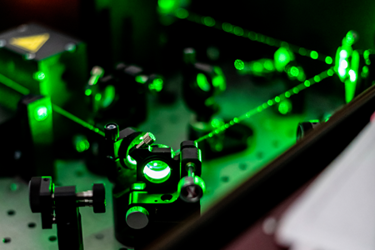Introduction To Laser Filters

Laser filters are specialized optical components designed to manage laser wavelengths by transmitting, blocking, or reflecting specific light frequencies. These filters are essential in applications such as Raman spectroscopy, fluorescence microscopy, and laser scanning confocal microscopy.
Several types of laser filters exist, each serving a distinct function. Laser line clean-up filters enhance laser beam purity by transmitting only the desired wavelength while blocking others. Edge filters, including short-pass and long-pass varieties, are critical in spectroscopy, enabling precise separation of laser signals from detected emissions. Laser notch filters selectively block a narrow laser wavelength band while allowing surrounding wavelengths to pass, making them essential in Raman spectroscopy to isolate weak signals. Dichroic beamsplitters, another category, combine or steer laser beams, optimizing multi-laser imaging and projection systems.
Key specifications for laser filters include transmission percentage, full-width half-max (FWHM), transition width, and blocking optical density (OD), which determine how efficiently a filter transmits or blocks laser light. Filters are also designed for specific angles of incidence (AOI), ensuring proper functionality in optical systems.
In practice, laser filters improve signal clarity in scientific instruments by minimizing noise and enhancing detection sensitivity. They play a vital role in multi-wavelength laser excitation, fluorescence detection, and Raman signal processing. Advanced filter designs, such as Semrock’s MaxLine and RazorEdge series, offer high precision and stability, ensuring optimal performance in demanding laser applications.
Get unlimited access to:
Enter your credentials below to log in. Not yet a member of Photonics Online? Subscribe today.
